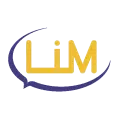A certified translator in Canada is a diverse, influential and important role. While many assume – and assume correctly – that translators aid with immigration purposes for entering and living in Canada, they actually assist in numerous other situations and primary industries.
Translators can assist with the following:
- Business and financial translations
- Helping with legal document translation
- Healthcare and medical purposes
- Marketing (for both local and international companies)
- Technical translations
Some translators decide to work with speech in addition to writing and assist interpretations. Check out, as our previous blog, “The Difference Between Translation and Interpretation,” which explains that, these are two very different roles.
Since we’re focusing on translators only, we’ll dive a little deeper into how to become a qualified translator in Canada.
Becoming A Certified Canadian Translator Through The CTTIC or Provincial Body
All certified translators have to be granted their title by their provincial or territorial regulatory bodies or through the corresponding provincial association.
You can find the association that represents your province through the CTTIC, the Canadian Translators, Terminologists and Interpreters Council, which represents all of the provincial certifying bodies in Canada with the exception of OTTIAQ, the Quebec Certifying Body. Furthermore, the provincial associations represent certified translators in Canada, interpreters, and terminologists, ensuring you work with a certified translator in Canada.
The process includes obtaining a recognized diploma in translation with at least two years of work experience (also known as the mentorship period) and completing a national certification exam, which is held twice a year.
You can also submit a dossier that requires 10 to 12 samples of approximately 250 words each of your work for evaluation, demonstrating the skill in a variety of subject areas, as well as general and technical terms.

For the former, each provincial body works independently and has its own evaluation methods and processes to select its members.
For example, the Alberta association, the ATIA, requires you to:
- Show sufficient experience
- Become an Associate member
- Pass the national exam by the CTTIC
- Or acquire a portfolio certification
- Recognition of certification in a different provincial association
You’ll also have to become a member, which means completing the Code of Ethics Examination, English Proficiency Examination and Associate-Level Examination.
The STIBC, the British Columbia body, on the other hand, requires you to either:
- Pass an English Language Proficiency Exam
- Take an Admission Translation Exam
- Pass an Ethics exam
- Or present additional documents as required through a dossier
- Make admission payment and pass Ethics exam
Once again, you’ll have to become a member, but you only need one year of experience in this case.
Here is a list of provincial translation associations in Canada:
- Alberta – Alberta Translators and Interpreters Association
- British Colombia – STIBC – Society of Translators and Interpreters of British Colombia
- Manitoba – ATIM – Association of Translators, Terminologists and Interpreters of Manitoba
- Ontario – ATIO – Association of Translators and Interpreters of Ontario
- Quebec – OTTIAQ – Ordre des traducteurs, terminologues et interprètes agréés du Québec
- Saskatchewan – ATIS – The Association of Translators & Interpreters of Saskatchewan
- New Brunswick – CTINB – Corporation of Translators, Terminologists and Interpreters of New Brunswick
- Nova Scotia – ATINS – Association of Translators and Interpreters of Nova Scotia
- Prince Edward Island – CTTIC – Canadian Translators, Terminologists and Inter preters Council
- Newfoundland and Labrador – CTTIC – Canadian Translators, Terminologists and Interpreters Council
- Nunavut – CTTIC – Canadian Translators, Terminologists and Interpreters Council
- Northwest Territories – CTTIC – Canadian Translators, Terminologists and Interpreters Council
As each body is independent and governed by its own bylaws and does its own thing, you will have to visit their websites to obtain the most critical requirements.
As a rewarding and life-changing career, there is nothing better than becoming a certified translator in Canada.
At Languages in Motion Ltd., our goal is to bring the world together through professional translation and interpreting services. As a leading translation agency with access to over 200 languages, including American Sign Language, French, Spanish, Portuguese, Chinese, and Arabic, we help individuals, families, and businesses communicate clearer than ever before. Our certified translator in Canada and interpreters have worked in numerous industries, including the Public Sector (Police, Healthcare, Court, Education, and Government & Municipalities), Healthcare, Finance, Local and International Law Firms, Marketing, Insurance Companies, Private/Independent Medical Clinics, Law and Order, and Immigration. Our experience, passion for delivering results, commitment to clients, and enthusiasm for building relationships are why we are recognized as the best translation agency in the industry. Contact our team of certified translators and interpreters from Toronto to Winnipeg to Calgary and Vancouver today at 1-888-556-5541.

